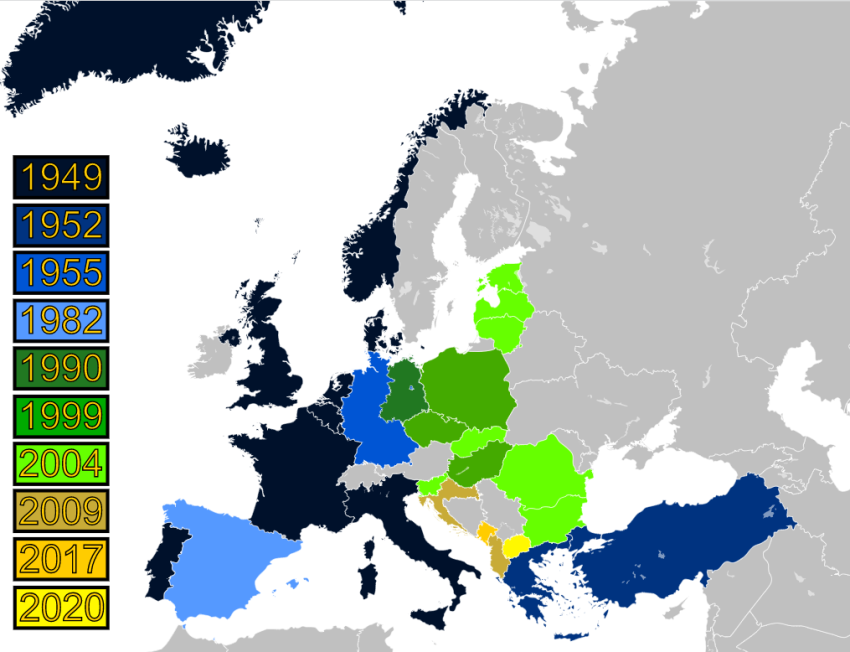
The North Atlantic Treaty Organization (NATO) Summit has ended in Madrid and the danger of a global war has become greater. NATO has shown the world over June 29–30 that the war in Ukraine will drag on and worsen in intensity. It has also deliberately broadened its scope to threaten global security and peace.
NATO’s new Strategic Concept makes it plain that it views China as an enemy and a regional and global security risk.
The document declared: “The People’s Republic of China’s (PRC) stated ambitions and coercive policies challenge our interests, security and values.”
It also said that China “uses its economic leverage to create strategic dependencies and enhance its influence” and alleged that there is a “deepening strategic partnership between the People’s Republic of China and the Russian Federation” that seeks to “undercut the rules-based international order run[ning] counter to our values and interests”.
The statement pledged to “individually and collectively deliver the full range of forces, capabilities, plans, resources, assets and infrastructure needed for deterrence and defence, including for high-intensity, multi-domain war fighting against nuclear-armed peer-competitors”.
NATO’s decision to classify China a “security threat” is a serious one. There is no longer any masquerading behind ambiguous language. The Strategic Concept, NATO’s policy and program for the next decade, has declared that China is a real enemy.
China, for its part, reacted swiftly and predictably. The Chinese Mission to the European Union urged NATO “to stop provoking confrontation by drawing ideological lines, abandon the Cold War mentality and zero-sum game approach”.
The Chinese statement continued: “Since NATO positions China as a ‘systemic challenge,’ we have to pay close attention and respond in a coordinated way. When it comes to acts that undermine China’s interests, we will make firm and strong responses.”
At a stroke NATO, and by implication the United States, has made the world an even more dangerous place.
Australia’s Prime Minister Anthony Albanese repeated the refrain that the Western world was reasserting its democratic values and that the NATO Summit had been successful. If success can be measured by raising global tensions, then Albanese is correct. His words have done little to mend bridges with the country’s most significant trading partner.
Following the election of the Labor government, there was talk of a “thaw” in relations between the two countries. As recently as the June 18, The Guardian’s foreign affairs and defence correspondent Daniel Hurst was talking of how “the new Albanese government is embarking on a grand experiment”. He posed the question about whether a “different tone” would be “enough to get the relationship onto a better footing”.
That question has been answered.
Less than two weeks later, the China Daily editorialised on June 29 that “the take-away from his [Albanese’s] words then is that while he might talk of wanting to improve his country’s relations with China, he is either going to have to make dedicated efforts to better understand the issues that have led to bilateral ties deteriorating precipitously or be more diplomatically astute. “Unfortunately, the NATO Summit is not conducive to that — rather the opposite,” it said.
Such a ramping up of rhetoric bodes ill. But it is inconceivable that the government could behave in any other way. While China may be Australia’s biggest trading partner, it is the US's direct capital investment in Australia — 25% — that ensures the “appropriate” line is taken.
The future of the region looks bleak: China has been declared an enemy and NATO is globalising. Japan, South Korea, New Zealand and Australia have been willingly co-opted into this defacto military bloc.
The war in Europe continues. Russia, the other declared enemy, is, as a consequence of its invasion of Ukraine, seeing its already weak economic base shrink and its military capacity is being degraded.
Russian President Vladimir Putin’s domestic legitimacy is being shredded. The winner, if such a term can be used, will not be the people of Ukraine. It will be the US administration, whose NATO allies are waging a proxy war on a Western front.
We are witnessing the birth of an expanded, globalised NATO, with the US leading a coalition of Asia-Pacific states including Australia, intervening politically, economically and potentially militarily in another proxy Eastern front against that other “enemy” — China.
NATO’s 2022 Strategic Concept takes us to a future where the unthinkable is being consciously considered.
NATO, the US and Australia might speak of “democratic” values and of defending a “rules-based order” in the world. The reality is different: for them economic power is all that really matters.
Wars are fought when one side becomes convinced that the benefits outweigh the costs, or when one side believes that it is facing an existential threat. The US, as the world’s capitalist hegemon, may well believe that the benefits outweigh the costs. There is a threat — the loss of total control of the capitalist economy. The NATO Summit has shown us how the world might be shaped and what lengths the US is prepared to go to.